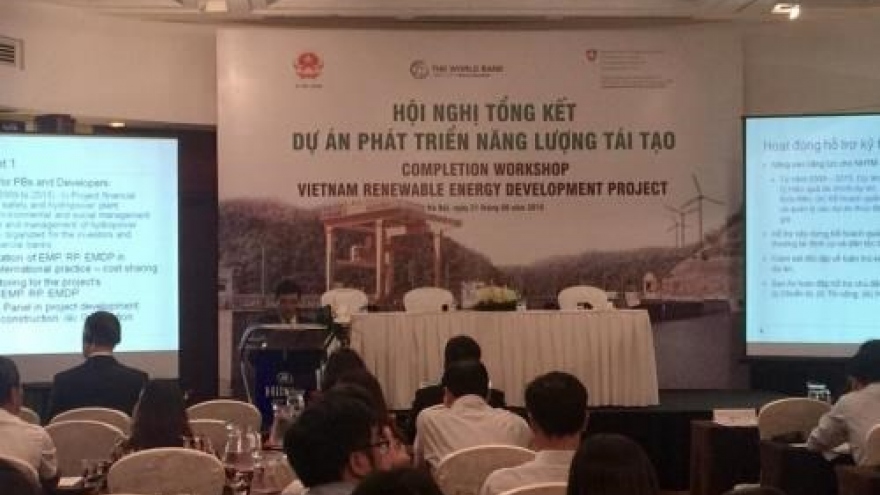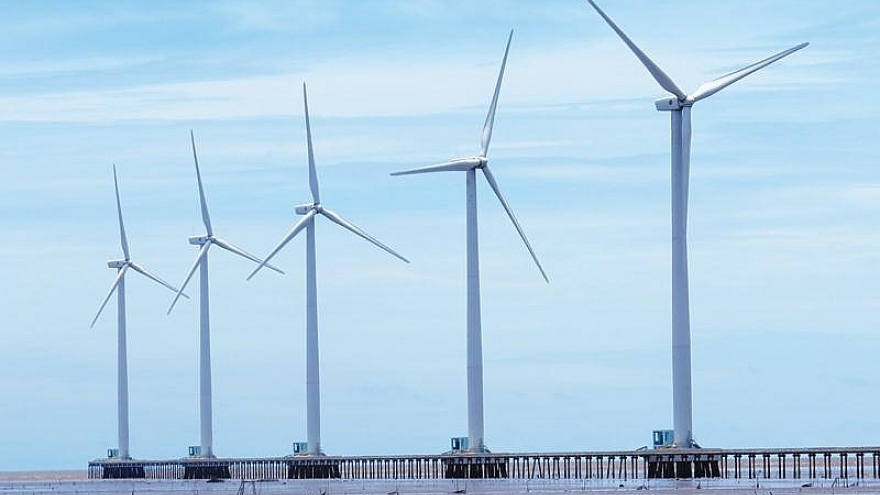Policies encourage renewable energy development
New preferential policies have encouraged both local and international firms to invest in renewable energy, according to authorities.
 |
|
Dam Nai wind power project in Ninh Thuan (Source: VNA)
|
About 25 solar power projects have been added to the existing master plan, 18 of which have total registered capital of more than VND27.8 trillion.
From now until 2030, Ninh Thuan province is expected to attract further investment for wind power projects, with a total capacity of 1,429MW, and solar power projects, with total power of 3,912MW.
To encourage more investment, Ninh Thuan province has asked the Prime Minister and Ministry of Industry and Trade to instruct the Electricity of Vietnam (EVN) group to emphasise the development of electricity transmission systems.
When construction of all renewable energy projects in the province are completed, these transmission systems will be crucially needed.
At the same time, EVN should also consider adjusting electricity prices, the province said.
According to experts, a series of preferential policies on credit, import tax, export tax and corporate income tax have encouraged the development of renewable energy.
A government decision on solar power projects in Vietnam, for example, calls for electricity buyers to purchase all the electricity generated from grid-connected projects at the price of VND2,086/kWh (excluding VAT).
The electricity price is adjusted according to the exchange rate between the Vietnamese dong and the US dollar.
After the Government increased the electricity price to US$0.93/ kWh last June, about nine projects on renewable energy generation and distribution were registered by foreign firms each month, according to a report on renewable energy in Vietnam in 2018 by StoxPlus, a financial and economic information service provider in Vietnam.
Both local and international firms are interested in investing in the renewable energy sector, which is expected to grow by 23.2% between 2020 and 2030.
As of now, Vietnam has a total of 245 renewable energy projects which have been deployed in different stages.
If all projects are actually carried out, the amount of clean electricity generated should reach 23.2GW, which is more than 10 times the target set for total renewable electricity capacity by 2020, according to the national VII power plan.
However, only 19% of the projects are in the construction stage, and only eight percent actually generate electricity, while the rest are still in the preparation phase.
Vu Thi My Dung, an expert at StoxPlus, said that in addition to more preferential policies and incentives from now until June 2019, a domestic-foreign joint cooperation model should be considered.
“While domestic firms lack sufficient technology, experience and financial capacity, international partners can complement this,” she said.
“For the best management, foreign firms can choose to increase their investment in each phase of the project until they hold 100% of the joint venture capital,” she added.



